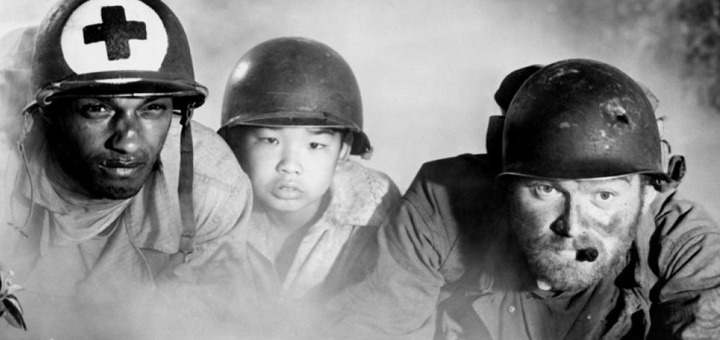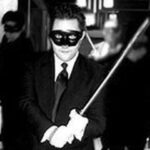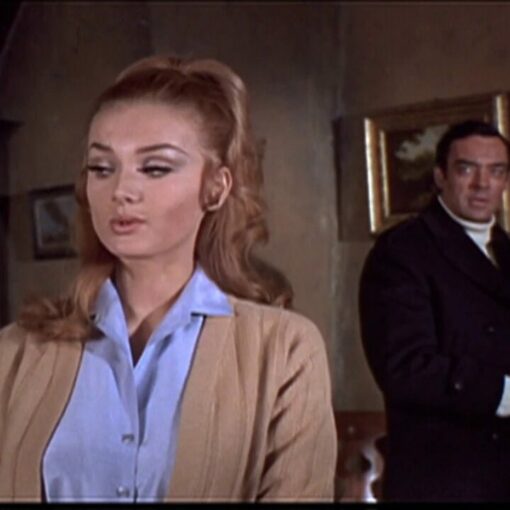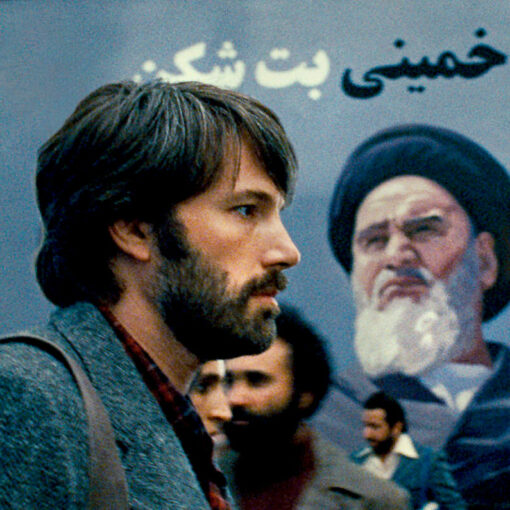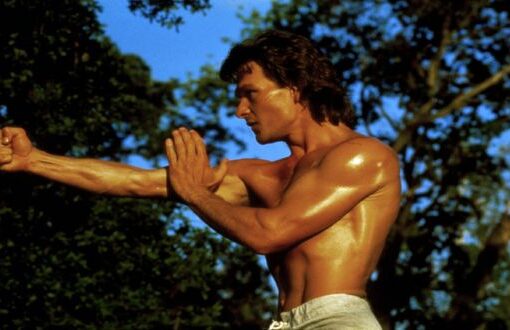Sam Fuller’s movies always begin with some kind of eyecatching visuals. In The Steel Helmet, there’s a single shot of a punctured army helmet as the opening credits are shown. This metal bucket belongs to Sgt. Zack (Gene Evans) a grizzled, cigar chomping vet who has had his hands tied behind his back after being captured by the North Koreans. He’s escaped a miserable fate since a bullet missed his noggin by inches, during a massacre of his fellow soldiers. Luckily for him a young South Korean boy (William Chun) appears and helps him get free. Zack quickly nicknames the kid “Short Round” (sound familiar?) and the two set off across the countryside.
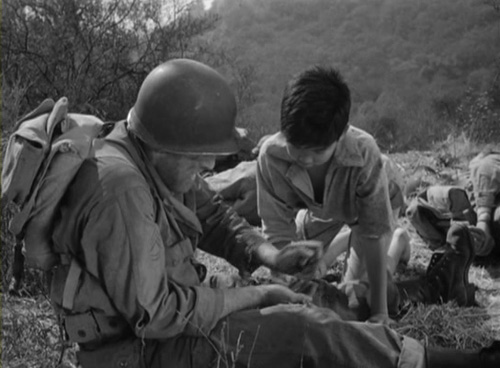
They soon encounter Cpl. Thompson (James Edwards) a Black medic who is the only survivor of his own unit. Not long after, a squad led by Lt. Driscoll (Steve Brodie) comes through the misty terrain. These men that include the musical organ toting “Fat Paul” and Pvt. Baldy (Richard Monahan) and are clearly unexperienced and not very bright and Zack has no intention of sticking around to help them out. When a sniper attack suddenly occurs, Zack along with his old pal Sgt. Tanaka (Richard Loo) aka “Buddhahead” another WWII vet who’s part of Driscoll’s outfit, save the others. Zack then agrees to accompany them to a mountaintop Buddhist Temple where they’re supposed to set up an observation post. Little do they know that a North Korean soldier (Harold Fong) is hiding out inside. Once they settle in, the men are targeted by the sneaky enemy but he is quickly captured.
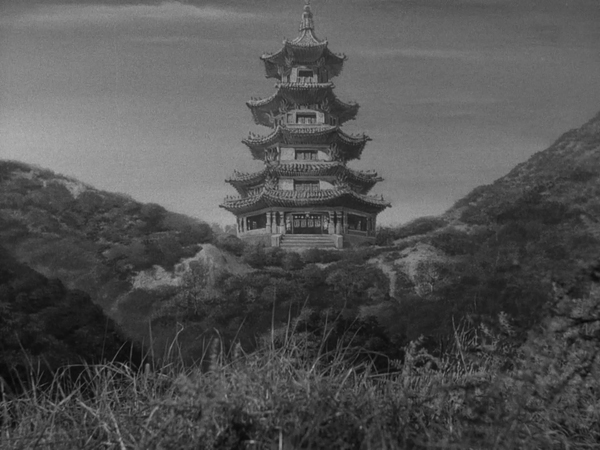
It is here where the film’s most controversial elements come into play. The spiteful prisoner, seeing the multi-racial makeup of the group, begins taunting Tanaka and Thompson by bringing up Jim Crow and the Japanese internment camps of World War II (the first ever mention in a Hollywood studio film). Sam Fuller wasn’t one to shy away from such topics and his personal experiences in that war informed the film’s story and characters including Sgt. Zack, who expounds his own blunt views and philosophies about fighting to the other men. Fuller took lots of heat from the military for his depictions of the soldiers’ actions but was a man who never sugarcoated the realities and horror of what war was all about as he knew it. For instance, when one of Driscoll’s men is sent to retrieve a dead man’s dog tags, Zack flatly states that noone cares who the guy is now that he’s dead. Moments later the ignorant grunt is blown to bits by a booby trap set on the dead man. The movie’s dark sense of humor and portrayal of the types of soldiers that Fuller knew firsthand are what make it such a unique work of war genre cinema.

As well as being an outstanding Men on a Mission film, and the first film made about the Korean conflict, The Steel Helmet is an example of low budget filmmaking that surpassed its meager production values. Sam Fuller wrote the script in only a week and shot it in ten days on a Hollywood studio lot/in Griffith Park with 25 extras on a budget of $104,000. It would go on to gross more than 6 million at the box office and influence the artform. Director Martin Scorsese, a big fan of Fuller’s stylized shots in this film, would use similar imagery in his 1980 masterpiece Raging Bull. The Steel Helmet is an intense, pulp war classic that shows that a strong, bold vision and well written script can do wonders on the big screen.

